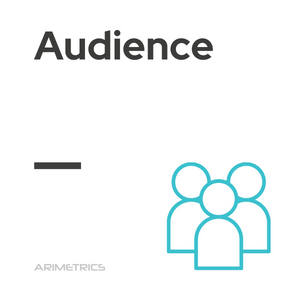Definition:
Audience is the number and/or characteristics of people who are exposed to a particular type of advertising or to some means of communication.
The audience is vital to the world of marketing, as without it you can’t generate any revenue through advertising. If a magazine doesn’t have readers, no one is going to want to advertise in it. If a TV channel has no audience, there is no point in spending the advertiser‘s money.
One of the most important parts of content marketing is audience building. If there is no audience to receive that advertising, there is no reason in the first place to create content, so we will not be able to increase sales.
Audience Types
According to Jeff Rohrs, the audience could be divided into three groups:
- Search engines: it is an audience that has a need. They are looking for some personal interest, so you can attract their attention by providing them with content of their interest. These have absolute control over the consumption process, so there is no possible way to control your connection with the advertiser. The treatment they are given is important because, once satisfied they leave, so you have to try to convert them into permanent customers or pass them on to the other types of audience.
- Amplifiers: This audience has its own audience and can help extend the ad. Within this group are influencers, journalists or analysts. They often share content to grow their own audience, but this can be beneficial for advertisers, even if they do it when and how they want. They provide free advertising to companies and help direct search engines to their websites or blogs.
- Participants: it is an audience that also seeks the previous two. The goal of content marketing is to find and maintain the audience, and this is what participants are based on. They must give permission to communicate and let content be shared with them. Direct messages can be sent to them as they provide businesses with a direct form of contact. Their interactions provide data that can be studied to optimize the business. They provide companies with minimal control over the message to be sent. The objective of advertising is to establish a relationship with the participants.
Audiences in Facebook Ads
The advertising platform of the social network counts audiences as one of its main virtues. Thanks to the implementation of the Facebook pixel, audiences can be generated based on the interaction with your website. One of the main options is the creation of lookalike audiences, these are audiences similar to a previously defined root audience. Facebook’s algorithm will search for users similar to the root audience and thus allow you to expand your impact network.
Google Ads audiences
Google is becoming more and more important to audience segmentation. Remarketing audiences are also added by interest and similarities, opening a range of options. A very useful feature is the ability to put audiences in targeting. This allows the ads to be displayed normally but the particular data of those audiences are reflected in the metrics, it also allows you to make bid adjustments for each of the audiences.

